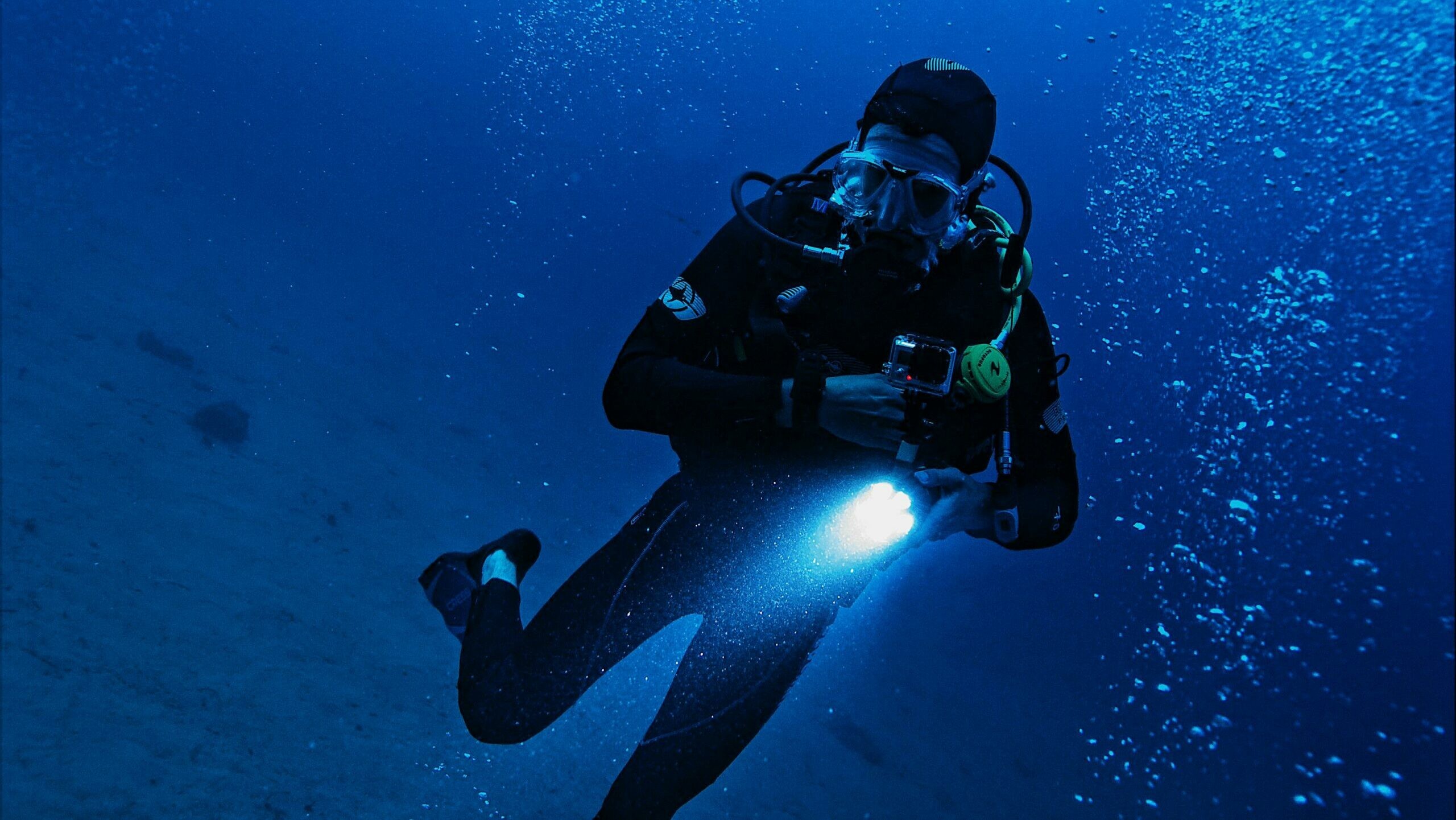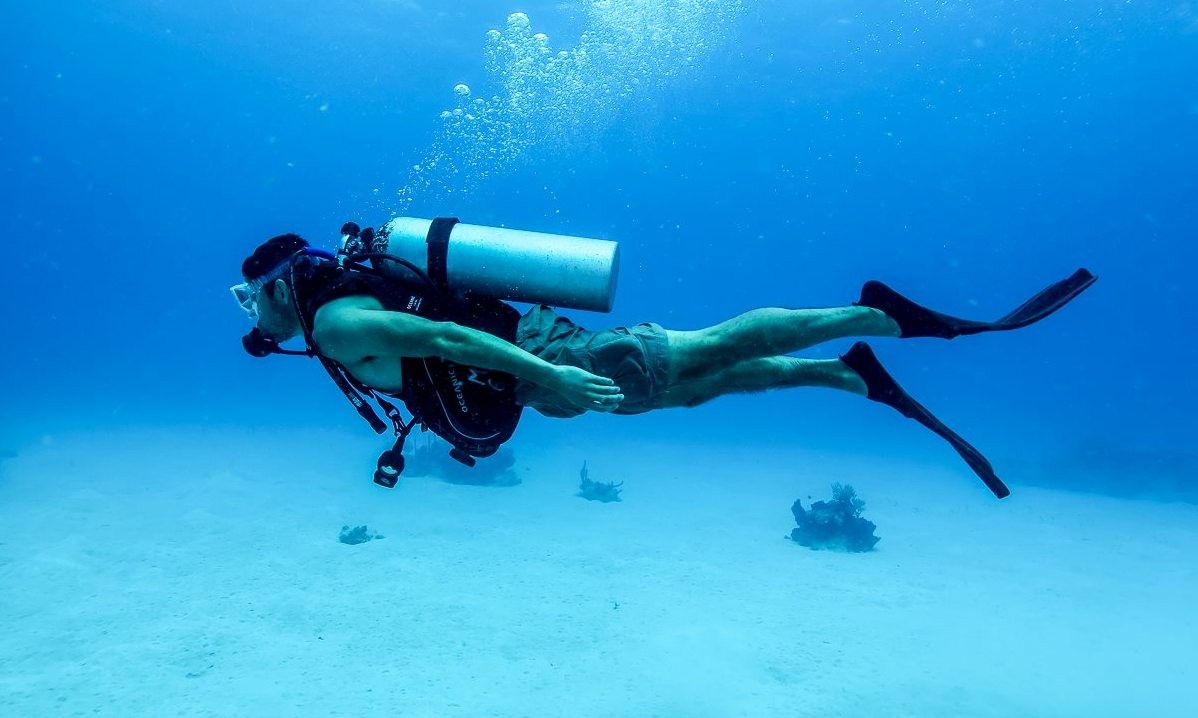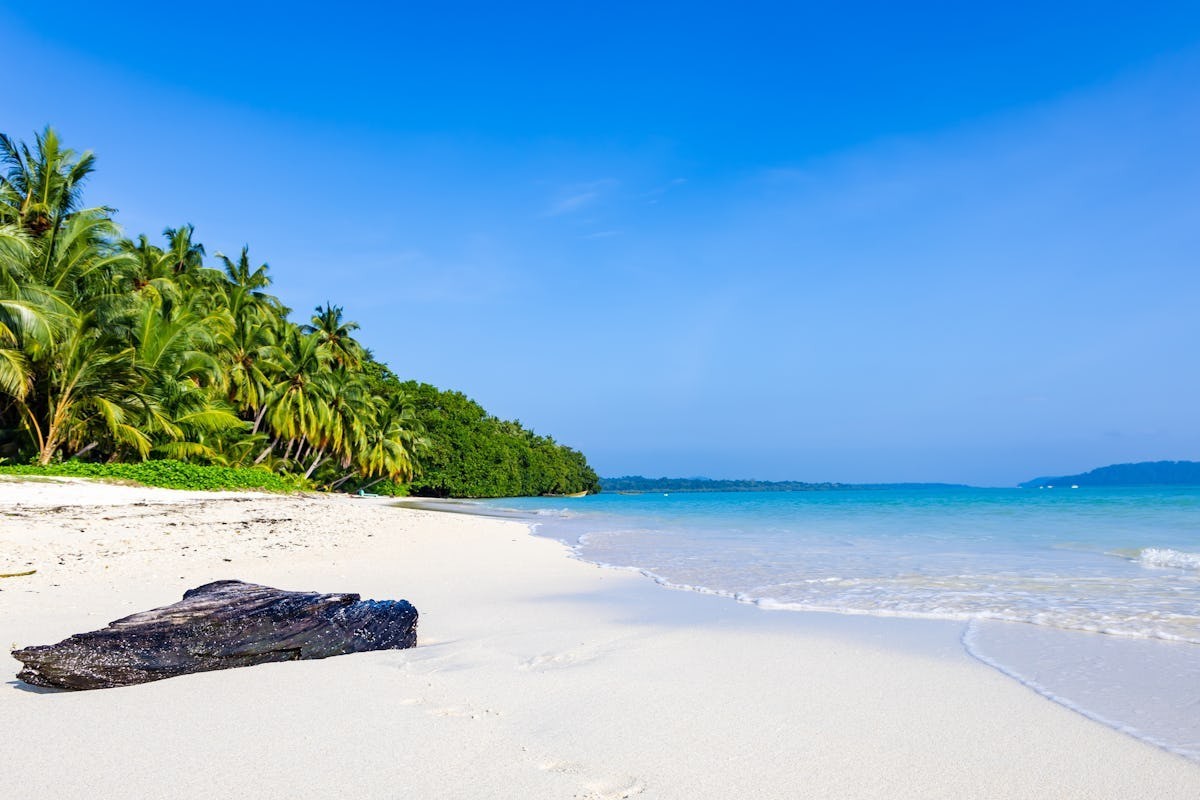Diving Sites in Port Blair



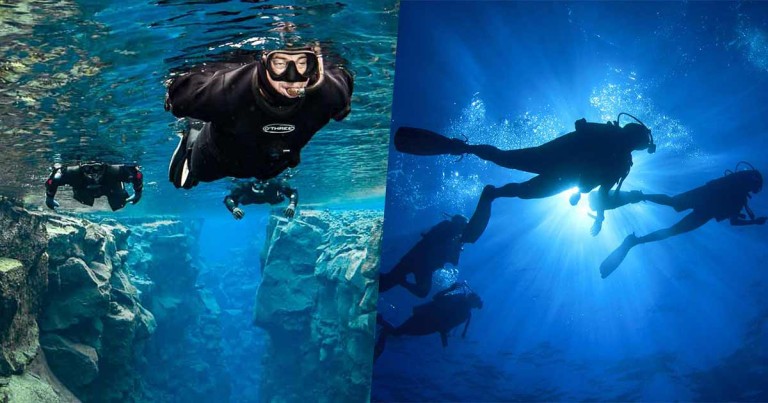
-
Aug 01, 2023
When it comes to underwater exploration, snorkelling and scuba diving are two activities that often come to mind. Both offer thrilling experiences and unique perspectives of the aquatic world. However, they are quite different in many respects. Let's delve into their similarities and differences to help you determine which might suit your adventurous spirit better.
First, let’s try to understand what is Scuba diving and Snorkelling
Snorkelling is a popular recreational activity that allows you to observe underwater life in a natural setting from the water's surface and to a limited depth. It involves the use of a diving mask, a shaped tube called a snorkel, and typically swimfins. The snorkel is a device that allows you to breathe while floating face-down on the surface of the water without having to lift your head for air.
Scuba diving, on the other hand, is a form of underwater diving where the diver uses a self-contained underwater breathing apparatus (scuba) to breathe underwater. Unlike snorkelling, which restricts you to the water's surface, scuba diving allows you to descend to greater depths and stay underwater for extended periods.
The word SCUBA is actually an acronym for Self-Contained Underwater Breathing Apparatus. As the name suggests, divers carry their own source of breathing gas, usually compressed air, allowing them greater independence and freedom of movement than surface-supplied divers.

Similarities Between Snorkelling and Scuba Diving
Interaction with Marine Life: Both snorkelling and scuba diving offer a unique opportunity to experience the marine environment up close and personal. These activities are more than just recreational pastimes, they provide intimate encounters with the vast variety of marine life. You might float alongside a majestic sea turtle, watch a clownfish play among the anemones, or observe a school of vibrant tropical fish flitting about the coral reefs. The thrill of seeing these aquatic creatures in their natural habitat is a shared benefit of snorkelling and scuba diving.
Need for Equipment: Though the type of equipment varies, both snorkelling and scuba diving necessitate gear to interact with the underwater world. Snorkelling equipment is relatively simple and consists of a snorkel (for breathing), a mask (for clear underwater vision), and usually fins (to help with mobility). Scuba diving requires a more extensive set of equipment which includes a mask, fins, a scuba tank filled with compressed air, a regulator (which delivers the air you breathe), a buoyancy control device (BCD, which helps you float, sink or hover at will), and usually a wetsuit or drysuit for thermal protection.
Water Skills: Irrespective of whether you choose snorkelling or scuba diving, being comfortable in the water is paramount. Basic swimming skills, such as being able to float, tread water, and move efficiently through the water, are crucial for both activities. Additionally, the ability to stay calm in open water scenarios, away from the shoreline, is essential to safely enjoy both snorkelling and scuba diving.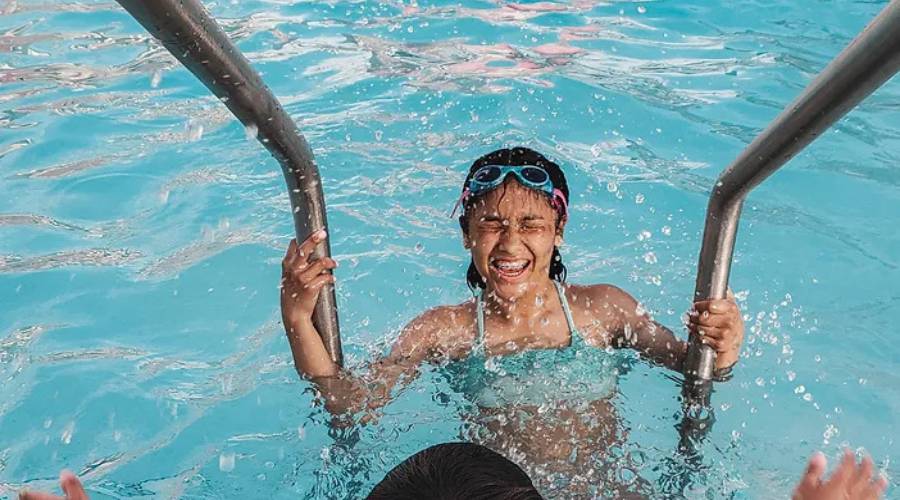
Health Considerations: Health is another common consideration in both snorkelling and scuba diving. Regardless of the activity, you need to be in good physical condition. This means having decent stamina, no severe respiratory issues, and no significant heart conditions. Both activities can be physically taxing and may place strain on your body, hence a healthy body can contribute significantly to a positive underwater experience.
Exploration of the Underwater World: The essence of both snorkelling and scuba diving is the exploration of the underwater world. Each dive, whether shallow or deep, provides the opportunity to experience something new. Both activities can transport you to a world teeming with life, colour, and beauty, providing a unique perspective that few other activities can match.
Training or Instructions: While the intensity and depth of training differ, both snorkelling and scuba diving benefit from at least basic instruction. For snorkelers, understanding how to use the gear, how to breathe properly through a snorkel, and knowing what to do if water gets into the snorkel are important. For scuba divers, training is more extensive and covers equipment usage, safety procedures, buoyancy control, and emergency protocols. Either way, having professional guidance ensures your safety and enhances your overall experience.
Differences Between Snorkelling and Scuba Diving
Depth of Exploration: One of the main differences between snorkelling and scuba diving is the depth you can reach during your underwater exploration. Snorkelling typically takes place on or near the water's surface. While snorkelers can perform surface dives to explore below, these are brief and limited by how long the individual can hold their breath. In contrast, scuba diving allows for exploration at much greater depths. Equipped with an air tank, scuba divers can spend extended periods underwater, venturing to depths well beyond the reach of snorkelers.
Equipment Complexity: The complexity and cost of equipment required also significantly differ between snorkelling and scuba diving. Snorkelling gear is comparatively simple, affordable, and easy to use, consisting of a mask, snorkel, and often fins. On the other hand, scuba diving involves more sophisticated, technical, and expensive gear, including scuba tanks, regulators, BCDs, and often dive computers to monitor depth and no-decompression limits. Understanding and managing all these pieces of equipment is a key part of the training and skillset for scuba diving.
Training Requirement: The extent of training needed for these activities is another clear differentiator. While snorkelling does benefit from some initial instruction – especially for beginners – it doesn't demand a formal certification. Scuba diving, however, requires thorough training and official certification. This process includes classroom instruction, confined water skill development, and a series of open water dives to demonstrate skill proficiency, all under the supervision of a certified instructor.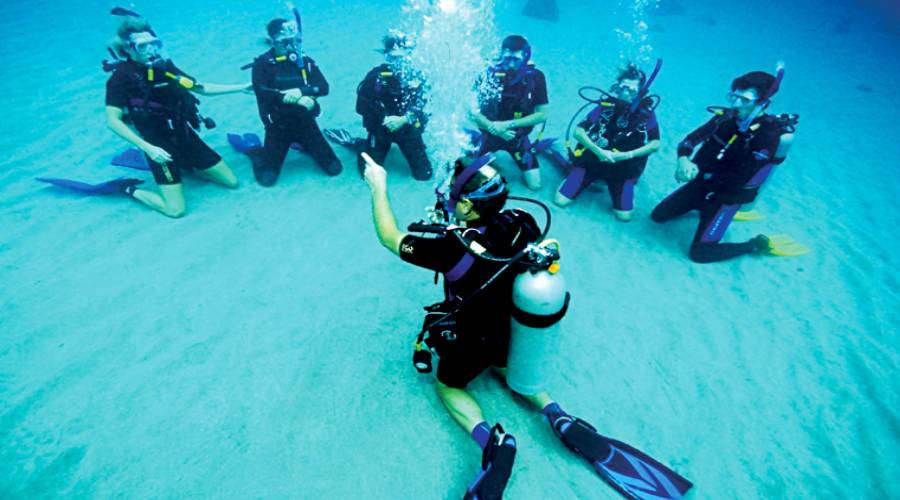
Duration of Activity: Snorkelling and scuba diving also differ in the duration of the underwater activity. A snorkelling session can last as long as the individual can comfortably keep swimming and diving for breath-hold explorations, and can easily be extended with short breaks. In contrast, the duration of a scuba dive is dictated by the amount of air in the diver's tank and the rate at which they consume it. Divers must also consider no-decompression limits and possibly required safety stops on the ascent.
Physical Demand: While both activities require a good level of fitness, scuba diving generally imposes more physical demands than snorkelling. The process of carrying heavy gear, managing buoyancy, and dealing with pressure changes at depth requires more physical exertion. The effort required for snorkelling is often less intense, focusing on relaxed swimming and breath control.
Risk Factor: Lastly, the risk factor associated with each activity is distinct. Scuba diving carries inherently more risk due to the increased depth, the potential for decompression sickness, equipment failure, and other issues that can arise from exploring deeper underwater environments. Snorkelling, being primarily a surface activity with short, shallow dives, is generally considered safer. However, care should still be taken with currents, marine life, and other potential hazards.
The cost factor: Snorkelling gear is generally more affordable and less complicated. The basic equipment includes a snorkel, mask, and fins. The cost of a snorkelling package may be INR 3000- 4500 per person.
Scuba diving involves more sophisticated equipment and training, making it more expensive. While a single dive may cost you around INR 4500-7000, the cost increases with the type of dive and also the certification you wish you get. A basic Open Water Diver certification from an organization like PADI or SSI may cost anywhere between INR 20,000 to INR 30,000. The cost includes theoretical training, confined water dives, open water dives, and certification.
Here's a summary table that highlights the major aspects of both Scuba diving and Snorkelling
| Aspect | Snorkelling | Scuba Diving |
| Interaction with Marine Life | Yes | Yes |
| Equipment Needed | Snorkel, Mask, Fins | Mask, Fins, Scuba tank, Regulator, BCD, Dive computer |
| Water Skills Required | Basic swimming skills and comfort in the water | Basic swimming skills, comfort in the water, and ability to manage equipment underwater |
| Health Considerations | Good general health, no severe respiratory or cardiovascular issues | Good general health, no severe respiratory or cardiovascular issues, fitness to handle physical demands |
| Underwater Exploration | Yes, usually at the surface and shallow depths | Yes, can explore greater depths |
| Training/Instructions | Basic instructions beneficial | Certification required |
| Depth of Exploration | Surface and shallow depths | Greater depths |
| Equipment Complexity | Simple, affordable | More complex, expensive |
| Duration of Activity | As long as comfortable, can take breaks | Limited by air supply and no-decompression limit |
| Physical Demand | Moderate | Higher |
| Risk Factor | Lower | Higher due to increased depth and equipment considerations |
Whether you choose to snorkel or scuba dive, both activities offer the chance to explore the underwater world, providing opportunities for incredible marine encounters and an appreciation for the ocean's ecosystems. The choice between snorkelling and scuba diving typically depends on your level of comfort in the water, your training, and how deep you wish to explore.
Diving Sites in Port Blair
Diving Sites in Havelock Island
Diving Sites in Neil Island
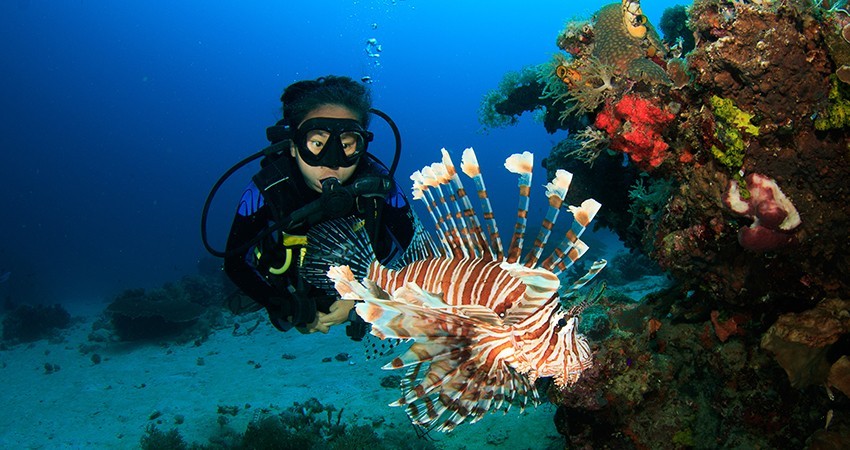
.jpg)
